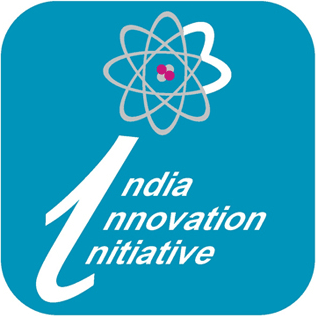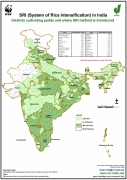Governance
Agilent Technologies: India Innovation Initiative - i3
Posted on 18 Jun, 2010 12:41 PMContent and Image Courtesy: India Innovation Initiative

The objective of the India Innovation Initiative project is to create an innovation eco-system in the country by sensitizing, encouraging and promoting innovators and facilitating commercialization of the innovations.
DST and CII jointly launched the Young Inventors initiative "Steer the Big Idea" in the year 2004. It was aimed at capturing the innovative ideas from young innovators for the benefit of Industry & society. In 2005, CII & DST joined hands with Industry to form IRIS - Initiative for Research and Innovation in Science. IRIS has been focused so far on school students i.e. innovators below the age group of 18 years. Agilent has been organizing the Agilent Engineering and Technology Awards through which it has been encouraging engineering students towards hands-on engineering in India and recognizing innovation.
CII & DST have now joined hands with Agilent to launch the nation-wide innovation competition for all innovators above the age group of 18+.
Need to bring focus of water & agriculture policies onto rainfed farming : SANDRP May '10
Posted on 18 Jun, 2010 11:03 AM![]()
The Dams, Rivers and People issue for Apr-May 2010 is out. The state government policies, programmes and practices in water resources and highlights the need to bring focus of water & agriculture policies onto rainfed Farming. It is likely to yeild better economic, hydrologic, sustainable, equitable and climate friendly results and foodgrains production as per our future demands.
Ek Phirangi Raja - Chutki Bhar Namak Paseri Bhar Anyay: The story of Frederick Wilson and the Great Indian Hedge
Posted on 18 Jun, 2010 12:33 AM Ek Phirangi Raja
Ek Phirangi Raja
In this essay, Romesh Bedi recounts the true story of Frederick E Wilson, a British army officer, who deserted the army after the Sepoy Mutiny of 1957, escaped to the Himalayas, and settled in Harsil, a remote village in Uttarakhand on the banks of the Bhagirathi.
Wilson makes a flourishing business from the export of skins, fur, musk from the region, and rips the local deodar forest, to cash in the growing demand for wooden sleepers during the expansion of the Indian railways by the British, which were sent down to the plains through the rivers. Wilson soon acquires a lease from the Raja of Tehri-Garhwal, for his timber business and keeps the Raja happy by giving him a share of the profits, and even begins to mint his own local currency, because of which locals start calling him Raja.
System of Rice Intensification and Paddy Cultivation - Maps developed by the WWF-ICRISAT Project
Posted on 14 Jun, 2010 06:23 PM Paddy, one the country's staple crops is cultivated all over the country, barring parts of Jammu and Kashmir, Gujarat and Rajasthan. This set of interesting maps about Paddy and System of Rice Intensification (SRI) from the SRI India website, maintained by the WWF-ICRISAT Project (a joint initiative of WWF and ICRISAT), give a bird's eye view of the districts under Paddy and SRI Paddy cultivation, and the Paddy productivity in various districts of the country.
Paddy, one the country's staple crops is cultivated all over the country, barring parts of Jammu and Kashmir, Gujarat and Rajasthan. This set of interesting maps about Paddy and System of Rice Intensification (SRI) from the SRI India website, maintained by the WWF-ICRISAT Project (a joint initiative of WWF and ICRISAT), give a bird's eye view of the districts under Paddy and SRI Paddy cultivation, and the Paddy productivity in various districts of the country.
Districts with Paddy cultivation and where SRI approach has been introduced: Of the total 604 districts in India, paddy is cultivated in 564 districts. Of these, in 246 districts, SRI paddy cultivation approach has been introduced (data as of 2010). The spread of SRI has been most widespread in Uttarakhand, Eastern Madhya Pradesh, Orissa, Jharkhand, West Bengal, Andhra Pradesh, Tamil Nadu and Karnataka, as 50-95% of the districts in these regions/states have presence of SRI.
Love for green: Healing the hills with trees - Work of Sachidanand Bharti in Uttarakhand (Video)
Posted on 12 Jun, 2010 12:01 PMLove for green: Healing the hills with trees - Work of Sachidanand Bharti in Uttarakhand
From Tubaah (NDTV Network) website (November 26, 2008).
Sachidanand Bharti is known as the treeman in Uttarakhand, where he has been dedicatedly planting trees since the last 25 years. Hills in Uttarakhand were once barren, but now they are lush green, all due to his efforts. Bharti is a school teacher by profession but his real calling is as a climate crusader.

Irrigation management transfer in India: The processes and constraints - Paper by IRAP
Posted on 10 Jun, 2010 07:12 PMThe paper discusses the evolution of Participatory Irrigation Management (PIM) in India, following the felt need for better irrigation management to prevent water scarcity in many regions in the country.
The irrigation sector was identified as a priority area in the various policy reforms that took place in the water sector in the country.These reforms emphasised the importance of involving end users/farmers in the operation and management of irrigation conveyance systems.
This led to the establishment of the Farmers Managed Irrigation Systems (FAMIS), which aimed at improving the overall efficiency of the irrigation system, generate a sense of ownership among farmers and to improve the irrigation revenue recovery rate. This laid the seeds for Participatory Irrigation Management (PIM) in India.
Activists from the Climate Revolution dig out climate policy gaps through the Right to Information Act
Posted on 10 Jun, 2010 07:27 AM Content Courtesy: AlertNet
Content Courtesy: AlertNet
Activists from the Climate Revolution initiative in India have discovered a crucial tool in their battle to hold the government accountable on its climate policies: the country's landmark Right to Information (RTI) Act.
Read more about Climate Revolution's work on RTI on their website here.
Irrigation water management for food security in India: The forgotten realities - Paper by IRAP
Posted on 09 Jun, 2010 06:14 PMIn this paper, the authors examine the current debates around India's water crisis and its implications for food security in the country. The paper takes a critical look at the recent official assessments of groundwater exploitation in India in the context of these debates.
The paper proposes that there is a need to make a qualitative assessment of the magnitude of food security and water management challenges facing the country. It argues that two important factors drive the agricultural growth and food production in India. These include access and availability of arable land and water resources, which need to be examined and analysed with particular reference to their regional variations, to get a true understanding of the situation.
Draft of “The Dam Safety Bill, 2010” approved
Posted on 08 Jun, 2010 06:24 PMAs per the Press Information Bureau's press release, the Union Cabinet has approved the proposal of the Ministry of Water Resources for enacting The Dam Safety Bill, on May 13 2010. The Bill is to be introduced in the Parliament.
The main objectives of the legislation are:-
• The new legislation will help the States in adopting uniform dam safety procedures which shall ensure safety of dams and safeguard benefits from such dams.
Dams on Himalayan rivers: How good is the science?
Posted on 08 Jun, 2010 05:38 PMThis brief article by Prof Jayanta Bandyopadhyay in the May 16-31 2010 issue of Business Economics magazine, highlights the recent plans of the central and state goverments of constructing a large number of dams on Himalayan rivers. Environmentalists continue to consistently argue against the construction of dams that are built without respect for ecological sciences and warn that this could lead to increase in disasters in the fragile Himalayan region.





